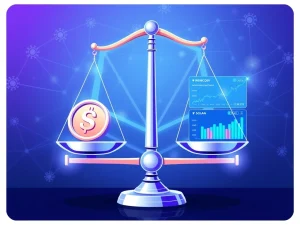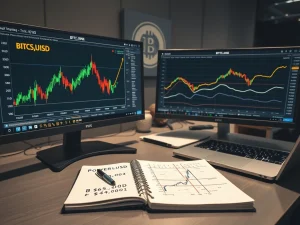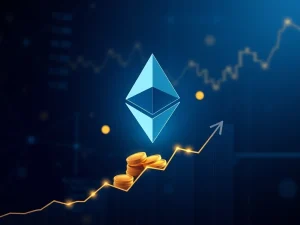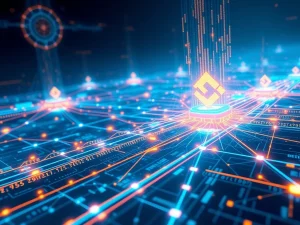Revolutionary Tokenized Debt: State Street Joins JPMorgan’s Groundbreaking Platform
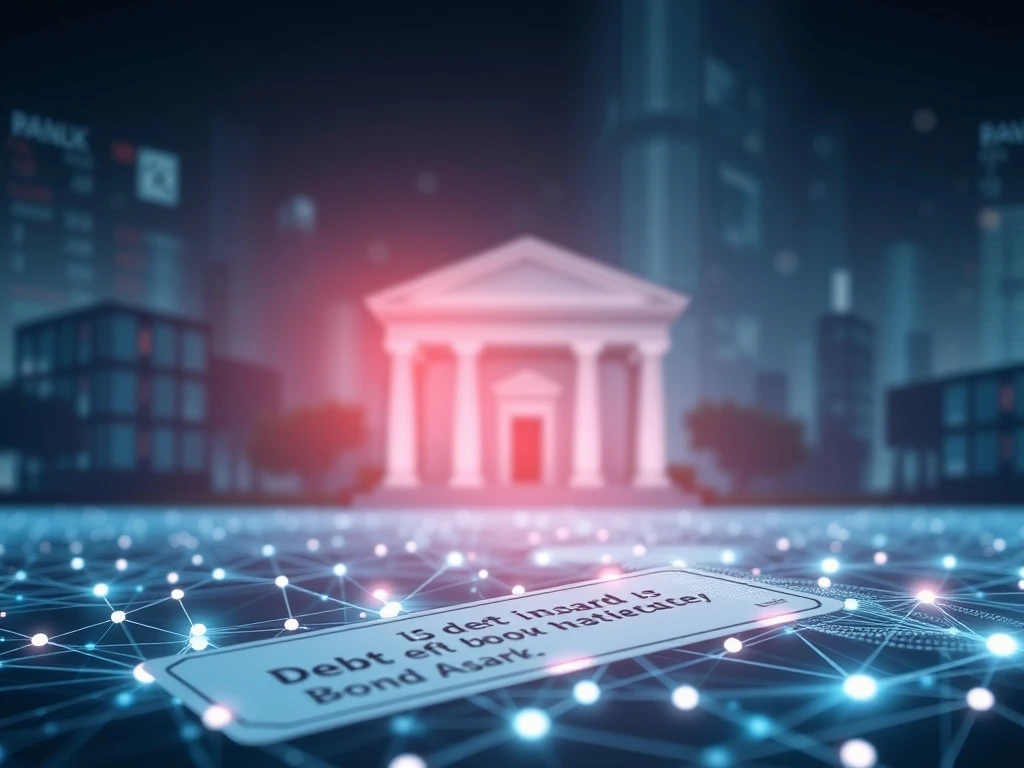
The financial world is witnessing a groundbreaking shift. Traditional institutions are increasingly embracing blockchain technology. A significant development recently occurred. State Street, a global financial giant, joined JPMorgan’s tokenized debt platform. This move marks a pivotal moment. It signals a new era for digital assets. Furthermore, it paves the way for wider institutional adoption of real-world asset (RWA) tokenization. This collaboration highlights the growing convergence of traditional finance and the blockchain space. It also demonstrates a clear commitment to innovation from major players.
Advancing Tokenized Debt: State Street’s Pioneering Role
State Street has made a historic move. It became the first third-party custodian on JPMorgan’s Digital Debt Service platform. This development is profoundly significant. It enables State Street to custody blockchain-based debt securities. These securities are for its institutional clients. Essentially, this means State Street can now securely hold digital representations of government or corporate bonds. These bonds are issued and managed on a blockchain. This capability streamlines operations. It also enhances security for investors. The integration highlights a growing trend. More traditional financial firms are exploring blockchain applications. This shift offers benefits. It provides improved efficiency. It also offers greater transparency. The ability to custody tokenized debt instruments is a crucial step. It bridges the gap between traditional capital markets and the burgeoning digital economy. This positions State Street at the forefront of this evolution.
JPMorgan’s Digital Debt Vision: A Platform for Innovation
JPMorgan launched its Digital Debt Service platform with a clear goal. It aims to revolutionize how institutional clients trade and settle debt instruments. The platform utilizes advanced blockchain technology. This allows for increased efficiency and transparency in a previously complex process. Tokenized debt instruments represent real-world assets on a distributed ledger. This innovative approach significantly reduces settlement times. It also lowers operational costs. The platform offers a secure and permissioned environment. Here, financial institutions can execute complex transactions with confidence. JPMorgan continues to lead in this space. Its consistent commitment to blockchain solutions is evident. The platform design prioritizes institutional needs. It ensures regulatory compliance and robust security measures. This makes it an attractive option for large-scale financial operations.
State Street’s Landmark Transaction and Broader Market Impact
The inaugural transaction on the platform was highly notable. State Street purchased $100 million in tokenized commercial debt. This debt originated from Oversea-Chinese Banking Corporation (OCBC). OCBC is a prominent and well-established bank in Southeast Asia. This transaction demonstrates the platform’s practical utility. It also showcases the readiness of major institutions. They are ready to engage with tokenized debt. State Street’s participation carries immense weight. It is one of the “big three” asset managers globally. Its assets under custody exceed an astounding $49 trillion. Additionally, its assets under management total $5.1 trillion. This makes State Street a key player in the global financial landscape. Its embrace of digital assets is therefore a powerful endorsement. This move signals a strong institutional belief in the future of tokenized securities. It encourages other financial entities to explore similar avenues.
The Rise of RWA Tokenization: A Transformative Sector
State Street’s extended custody services are profoundly crucial. They now cover tokenized real-world assets (RWAs). This expansion highlights the rapid growth of the RWA tokenization sector. It signals a major milestone for the entire financial industry. More established financial institutions are actively interacting with the digital economy. RWA tokenization involves converting tangible assets into digital tokens on a blockchain. These assets can include a wide range of categories:
- Real estate holdings
- Commodities like gold or oil
- Government and corporate bonds
- Fine art and collectibles
This process offers multiple advantages. It enhances liquidity for traditionally illiquid assets. It also provides fractional ownership opportunities. This opens up investments to a broader range of investors. The market for tokenized RWAs is expanding quickly. It recorded impressive triple-digit growth recently. This growth excludes stablecoins, focusing purely on asset-backed tokens. The sector’s market capitalization surged to over $26.4 billion. This happened since the beginning of 2025. This indicates strong investor interest. It also shows increasing institutional confidence in this innovative asset class. The transparency and efficiency offered by blockchain are driving this rapid adoption.
JPMorgan’s Continued Push for Digital Assets and Blockchain
JPMorgan has been a consistent pioneer in blockchain adoption within traditional finance. It launched Onyx in 2020. Onyx is a comprehensive suite of blockchain-based services and technologies. It later rebranded to Kinexys in 2024. Kinexys is its dedicated RWA tokenization platform. This evolution shows JPMorgan’s long-term vision. It aims to integrate blockchain deeply into its core operations. The bank actively seeks strategic partnerships. These collaborations further develop essential payment infrastructure. For example, Oracle provider Chainlink announced a partnership with Kinexys in May. This collaboration specifically focuses on settling tokenized RWA transactions. These transactions occur efficiently between various financial institutions. This strategic move enhances the platform’s utility. It also ensures seamless interoperability within the broader financial ecosystem. JPMorgan understands the need for robust, scalable solutions.
Collaborative Milestones: Enhancing Tokenized Debt and RWA Ecosystems
Recent collaborations demonstrate significant progress in the digital assets space. In June, Kinexys, Chainlink, and RWA platform Ondo Finance completed a notable transfer. They successfully moved Ondo’s OUSG tokenized Short-Term US Treasurys Fund. This digital asset transferred seamlessly between Ondo’s layer-1 testnet. It then moved to the Kinexys permissioned chain. This cross-chain transfer was a significant technical achievement. It showcased the interoperability of different blockchain networks. This is crucial for a truly interconnected financial system. Chainlink founder Sergey Nazarov provided valuable insights on this development. He firmly believes tokenizing assets on-chain dramatically increases capital velocity. This benefits the broader economy. It also strengthens the entire crypto ecosystem by locking substantial value on-chain. Nazarov emphasized a critical need for the industry. “We need more high-quality assets onchain,” he stated. He also highlighted the urgent requirement for “more frictionless payments that existing institutions can use easily.” This sentiment underscores the ongoing efforts to make blockchain more accessible and practical for traditional finance.
The Future Landscape of Tokenized Assets
The current trajectory suggests significant and sustained growth. Traditional finance institutions are increasingly adopting blockchain. This trend is accelerating rapidly. State Street’s involvement on JPMorgan’s platform is a testament to this shift. It paves the way for more widespread adoption of tokenized securities. RWA tokenization offers numerous compelling benefits. These include improved liquidity, enhanced transparency, and significantly reduced operational costs. As regulatory frameworks continue to evolve globally, more institutions will likely follow suit. They will explore similar blockchain-based solutions. The convergence of traditional finance and blockchain technology promises a more efficient future. It also promises a more interconnected global financial system. The focus on high-quality assets on-chain will undoubtedly continue. Furthermore, the development of robust payment infrastructure remains a top priority. This ensures seamless and secure transactions for all participants. This digital transformation is reshaping how financial markets operate.
Navigating the Digital Frontier: Opportunities and Challenges for Digital Assets
While the opportunities are vast, the journey into digital assets also presents challenges. Regulatory clarity remains a key factor for broader adoption. Institutions require consistent guidelines. They need these to navigate the legal complexities of tokenized securities. Interoperability between different blockchain networks is also vital. This ensures seamless asset transfers and liquidity across platforms. Cybersecurity concerns are paramount. Protecting digital assets from theft and fraud is a continuous effort. Despite these hurdles, the momentum is undeniable. The efficiency gains and new market opportunities are too significant to ignore. The collaboration between industry giants like State Street and JPMorgan demonstrates confidence. It shows confidence in overcoming these challenges. It also shows confidence in realizing the full potential of blockchain technology. The financial industry is on the cusp of a profound transformation. Tokenized assets will play a central role in this evolution. This will lead to more innovative financial products and services.
The partnership between State Street and JPMorgan is a landmark event. It signifies a major step forward for tokenized debt and digital assets. This collaboration validates the immense potential of blockchain in traditional finance. It also sets a powerful precedent for other financial institutions globally. The future of finance appears increasingly digital and interconnected. This development firmly positions these industry leaders at its forefront. They are actively shaping the next generation of financial markets.






